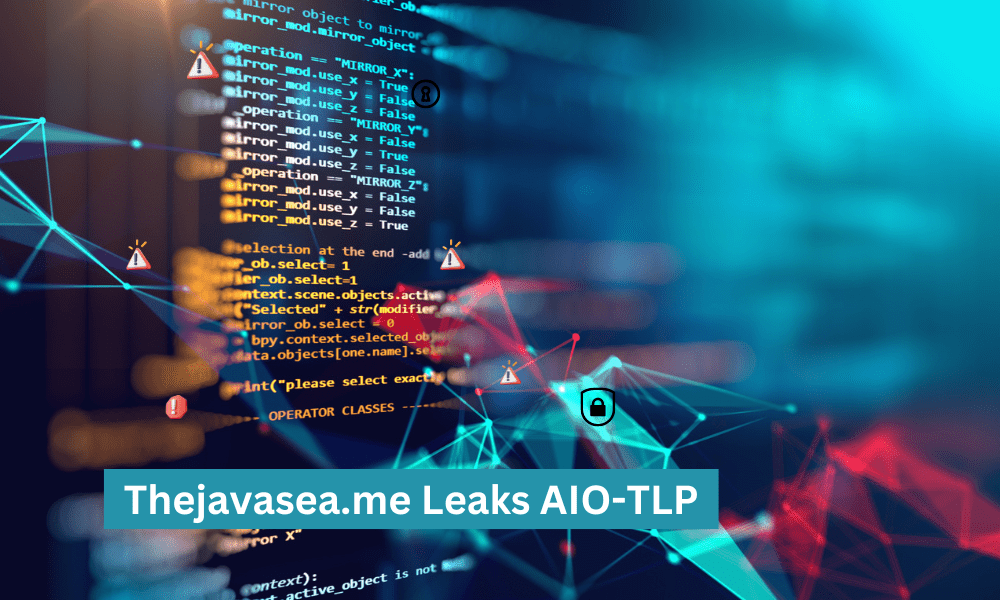Introduction
In the ever-evolving world of cybersecurity, data leaks continue to pose a significant threat to individuals and organizations. One of the latest incidents making headlines is the TheJavaSea.me Leaks: AIO-TLP287, particularly concerning AIO-TLP287. This breach has raised concerns regarding data privacy, online security, and the vulnerabilities associated with digital platforms. In this article, we will explore the details of the leak, its potential implications, and measures to safeguard sensitive information.
What is TheJavaSea.me Leaks: AIO-TLP287?
TheJavaSea.me is an online platform that has gained attention for hosting various datasets, tools, and scripts related to technology, development, and cybersecurity. While such platforms can be valuable for educational purposes, they are often scrutinized for the risk of unauthorized data exposure.
What is AIO-TLP287?
AIO-TLP287 appears to be a specific dataset or tool that has been compromised as part of the TheJavaSea.me Leaks: AIO-TLP287. Though full details of its content remain ambiguous, it is likely associated with sensitive information that, if misused, could lead to security vulnerabilities, financial fraud, and privacy breaches.
How Did the Leak Happen?
Data leaks generally occur due to various reasons, including:
Insider Threats: Employees or individuals with access to sensitive data may leak it intentionally or unintentionally.
Weak Security Measures: Poorly secured databases, weak passwords, and outdated security protocols often lead to breaches.
Exploitation of Vulnerabilities: Hackers frequently exploit software vulnerabilities to gain unauthorized access to servers and databases.
Third-Party Breaches: Many leaks stem from compromised third-party services connected to a main platform.
While the exact method of the TheJavaSea.me Leaks: AIO-TLP287 is still under investigation, these common causes highlight the importance of robust cybersecurity practices.
Implications of TheJavaSea.me Leak
Privacy Concerns
One of the biggest worries about this leak is the exposure of personal and corporate data. If AIO-TLP287 contains usernames, passwords, email addresses, or financial information, it could lead to identity theft and financial fraud.
Reputational Damage
Organizations and individuals linked to the leaked data may suffer reputational damage. Trust is crucial in the digital space, and any compromise can lead to a loss of customers, clients, and credibility.
Cybercrime Risks
Hackers can leverage leaked data to launch phishing attacks, social engineering scams, and other malicious activities. The more information they possess, the easier it becomes to manipulate victims.
Legal Consequences
Data breaches often lead to legal ramifications. Companies that fail to protect user data may face lawsuits, fines, and regulatory penalties, especially under laws like GDPR and CCPA.
How to Protect Yourself from Data Leaks
Use Strong and Unique Passwords
Weak passwords are a primary entry point for hackers. Using strong, unique passwords for each account can reduce the risk of unauthorized access.
Enable Multi-Factor Authentication (MFA)
MFA adds an extra layer of security by requiring a second form of verification (such as a code sent to your phone) before granting access to accounts.
Regularly Monitor Your Accounts
Checking bank statements, email activity, and online accounts for unusual activity can help detect unauthorized access early.
Stay Informed About Data Breaches
Use breach notification services to stay updated on compromised accounts and take necessary actions if your data is affected.
Limit Data Sharing
Be cautious about the information you share online, especially on unverified platforms. The less data available, the lower the risk of exposure.
Use a VPN for Secure Browsing
A Virtual Private Network (VPN) encrypts your internet connection, making it harder for hackers to intercept your data.
Regularly Update Software
Keeping operating systems, browsers, and applications updated ensures that security patches are applied, reducing vulnerabilities.
The Future of Cybersecurity in Data Protection
As data TheJavaSea.me Leaks: AIO-TLP287 continues to grow, the cybersecurity industry is evolving to counter these threats. Here are some key trends shaping the future of data protection:
AI-Powered Threat Detection
Artificial Intelligence (AI) is playing a significant role in identifying potential threats before they escalate into full-scale attacks. Machine learning algorithms can detect anomalies and mitigate risks in real-time.
Zero Trust Security Models
The Zero Trust approach assumes that no entity inside or outside a network is trustworthy by default. It requires continuous verification before granting access, reducing the risk of unauthorized intrusions.
Biometric Authentication
Fingerprint scans, facial recognition, and voice authentication are becoming more prevalent, providing a more secure alternative to traditional passwords.
Blockchain for Data Security
Blockchain technology offers a decentralized approach to data security, making it harder for hackers to alter or manipulate stored data.
Stronger Regulatory Frameworks
Governments and organizations are implementing stricter data protection laws to ensure companies take cybersecurity seriously. Compliance with these laws is crucial for businesses to avoid penalties.
Conclusion
The TheJavaSea.me Leaks: AIO-TLP287, particularly concerning AIO-TLP287, highlight the growing cybersecurity challenges in today’s digital world. Data breaches are becoming more frequent, affecting both individuals and organizations. However, by adopting strong security measures, staying informed, and leveraging emerging technologies, we can significantly reduce the risks associated with data leaks.
As cybersecurity threats continue to evolve, so must our defenses. Staying vigilant, implementing best practices, and educating others about digital safety will go a long way in protecting our information from falling into the wrong hands. The key takeaway is clear—prevention is better than cure when it comes to cybersecurity.





